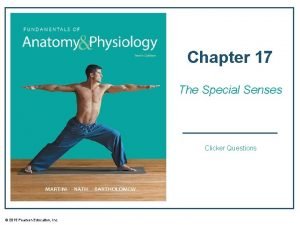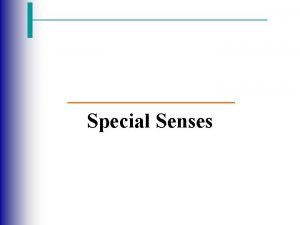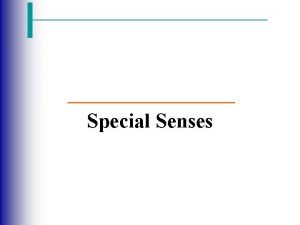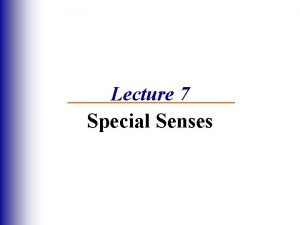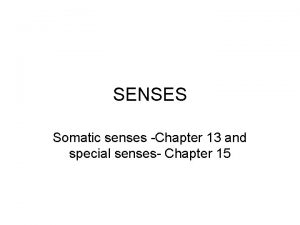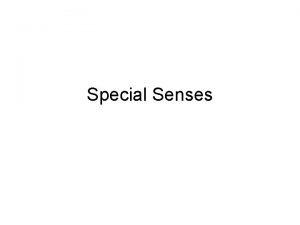29 3 The Senses KEY CONCEPT The senses







- Slides: 7

29. 3 The Senses KEY CONCEPT The senses detect the internal and external environments.

29. 3 The Senses The senses help to maintain homeostasis. • Senses gather stimuli, and send it to the nervous system. • Nervous system responds to stimuli. – Pupils shrink when too much light enters the eyes. – Goose bumps when cold air touches skin.

29. 3 The Senses The senses detect physical and chemical stimuli. • The eye contributes to vision. – Photoreceptors sense light. – Two photoreceptors work together: rod cells and cone cells. – The optic nerve sends the signals to the brain.

29. 3 The Senses • The ear contributes to hearing. – mechanoreceptors called hair cells bend in response to vibrations

29. 3 The Senses • Taste and smell use chemoreceptors. – Taste uses tongue, and smell uses nose. – Tastes are dependent on the sense of smell. – Chemoreceptors detect chemicals dissolved in fluid.

29. 3 The Senses • The skin senses touch. – Mechanoreceptors detect pressure. – Pain receptors detect damaged tissue. – Thermoreceptors detect temperature. pain receptor light pressure receptor hair follicle heavy pressure receptor

29. 3 The Senses Exercises • How do your sensory organs work with your brain to help you perceive the world around you? • What kinds of receptors are hair cells, rod cells, and cone cells and to which of your senses do these cells contribute? • Why do you think you can perceive some sounds as soft and others as loud? • In the human eye there are 20 rod cells for every 1 cone cell. How would your vision be different if you had 5 rod cells for every 20 cone cells? • For some invertebrates that live in the water, the sense of taste and the sense of smell are identical. Why do you think separate organs for taste and smell might have evolved in animals that live on the land but not in animals that live in the water?




